Lake Erie Spring Migration Trip Report, May 6 – 14 2025
The Lake Erie Spring Migration tour covered an amazing suite of birding locations along the north shore of Lake Erie in Ontario. Over the course of nine days, the tour was graced with beautiful weather, substantial bird diversity, and sightings of threatened amphibians and reptiles. Throughout the trip, we observed an impressive total of 174 bird species. This tour gave participants an exciting introduction into the ecology of spring migration and diversity and abundance of songbirds that move through southern Ontario in May.
Day 1: Toronto
At 5:30pm we gathered for our first dinner together at our hotel in Toronto, Ontario. Together we introduced ourselves, discussed target birds for the trip, travel expectations, and how to use eBird.
Day 2: Toronto – Colonel Samuel Smith Park, Pelee
At 5:30am we departed the Toronto hotel and ventured off on our first birding of this tour in Colonel Samuel Smith Park, a beautiful urban park in the Greater Toronto Area. The morning was sunny, but cool thanks to the breeze off Lake Ontario. We had great views of Red-necked Grebes, as we watched at least a dozen pairs build their nests on floating platforms in the harbor. The tour group was also introduced to Baltimore Orioles and White-crowned Sparrows, our first of many to come. We also saw large flocks of Red-breasted Mergansers and Long-tailed Ducks right off of the shore on the open lake. After our Toronto birding, we hit the road for Point Pelee National Park. Once we arrived in Point Pelee, we walked the Tilden Woods trail where we observed mixed flocks of warblers and vireos.
Day 3: Pelee
Early bird gets the worm! Our first birding morning at Point Pelee started at 5am as we departed from the QualityInn in Leamington. In the dark, we drove to the Point Pelee Visitor Centre, with the goal to catch the first shuttle to the tip of Pelee, Canada’s most southern point. Upon our arrival in Pelee, we could hear American Woodcocks “peent”-ing in the fields and American Robins, Baltimore Orioles, and White-crowned Sparrows singing as dawn approached. We arrived at the Tip for sunrise and watched the bird migration commence. Large flocks of Red-breasted Mergansers, Bonaparte’s Gulls, Ring-billed Gulls, and Common Terns continuously flew by the Tip and would land on the sandy spit for rest. A couple Ruddy Turnstones were observed on the Tip along with a fatigued Palm Warbler that came very close to us just after landing on the Tip.
After the sunrise at the Tip, we sensed a storm front coming in and made our way back to the tram stop at the Tip. Just in time, the rain hit us as we sought refuge under the pavilion. The storm front must have pushed in another flock of migrants, because all of a sudden we began to see songbirds moving through the forest seeking shelter from the rain. As we waiting under the pavilion, we observed Carolina Wren, Blue-headed Vireo, Ovenbird, and many White-throated Sparrows moving about. Eventually, the rain let up and all of a sudden we were amidst mixed flocks of warblers that landed on the Tip. The trees were loaded with Nashville Warblers, American Redstarts, Black-throated Green Warblers, Black-throated Blue Warblers, Yellow Warblers, Black-and-white Warblers, Blackburnian Warblers, and Cape May Warblers.
We eventually made our way back to the Visitor Centre and then walked the White Pine and Northwest Beach trails where we observed more mixed flocks of warblers including Chestnut-sided Warbler, Bay-breasted Warbler, and Magnolia Warbler along with Swainson’s Thrush, Wood Thrush, and Hermit Thrush. Eventually we ended up back at the Visitor Centre for lunch and after our picnic, we continued on our birding hikes and explored the Tilden Woods trail from the Visitor Centre. On this walk we watched an American Kestrel forage over a field, Eastern Bluebirds, and observed new species for the trip such as Swamp Sparrow, Rusty Blackbird, and more. We eventually rounded out our birding day at Hillman Marsh where we saw Dunlin, Least Sandpiper, Semipalmated Sandpiper, Killdeer, American Widgeon, Green-winged Teal, and Lesser Scaup.
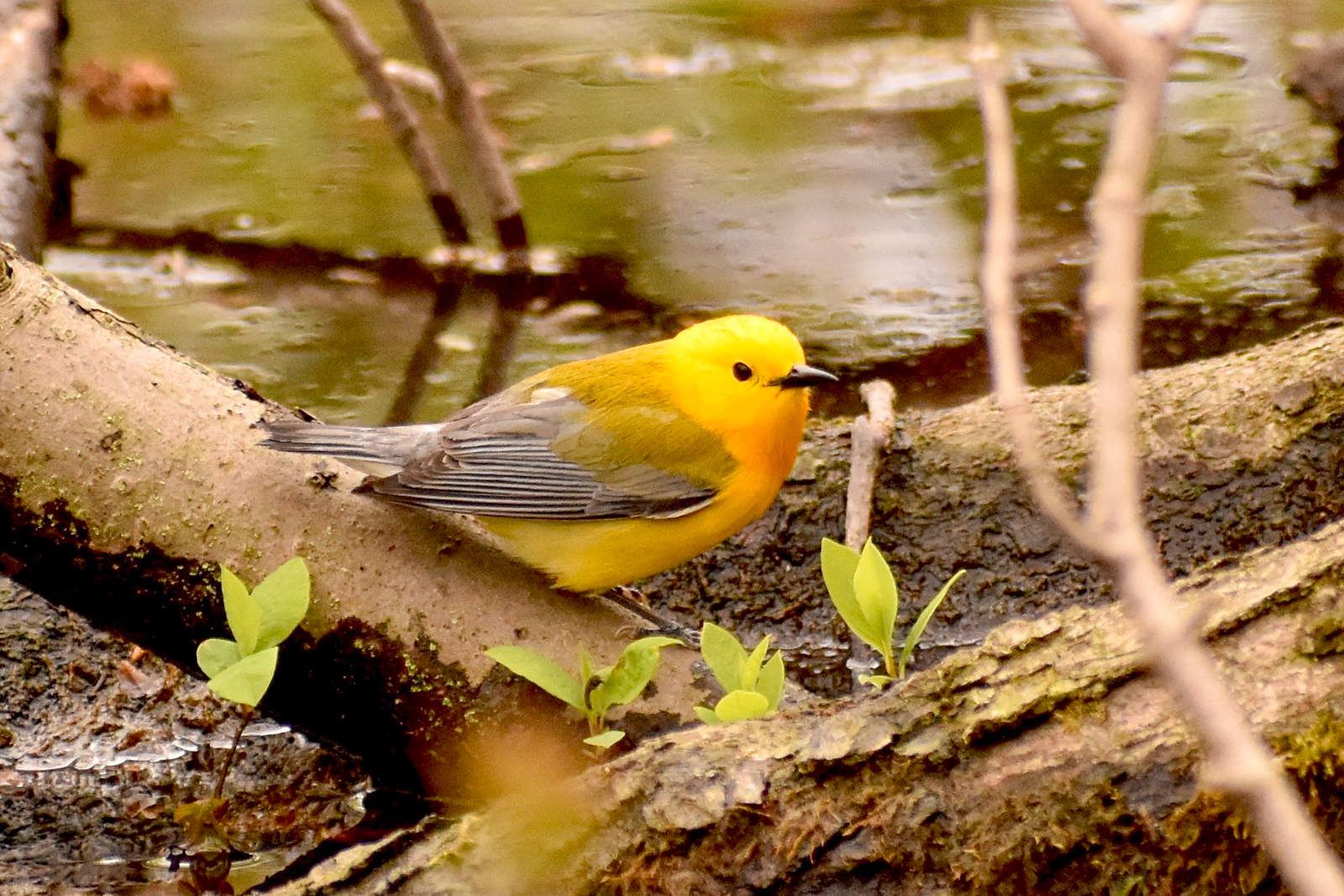
Prothonotary Warbler © Brendan Boyd
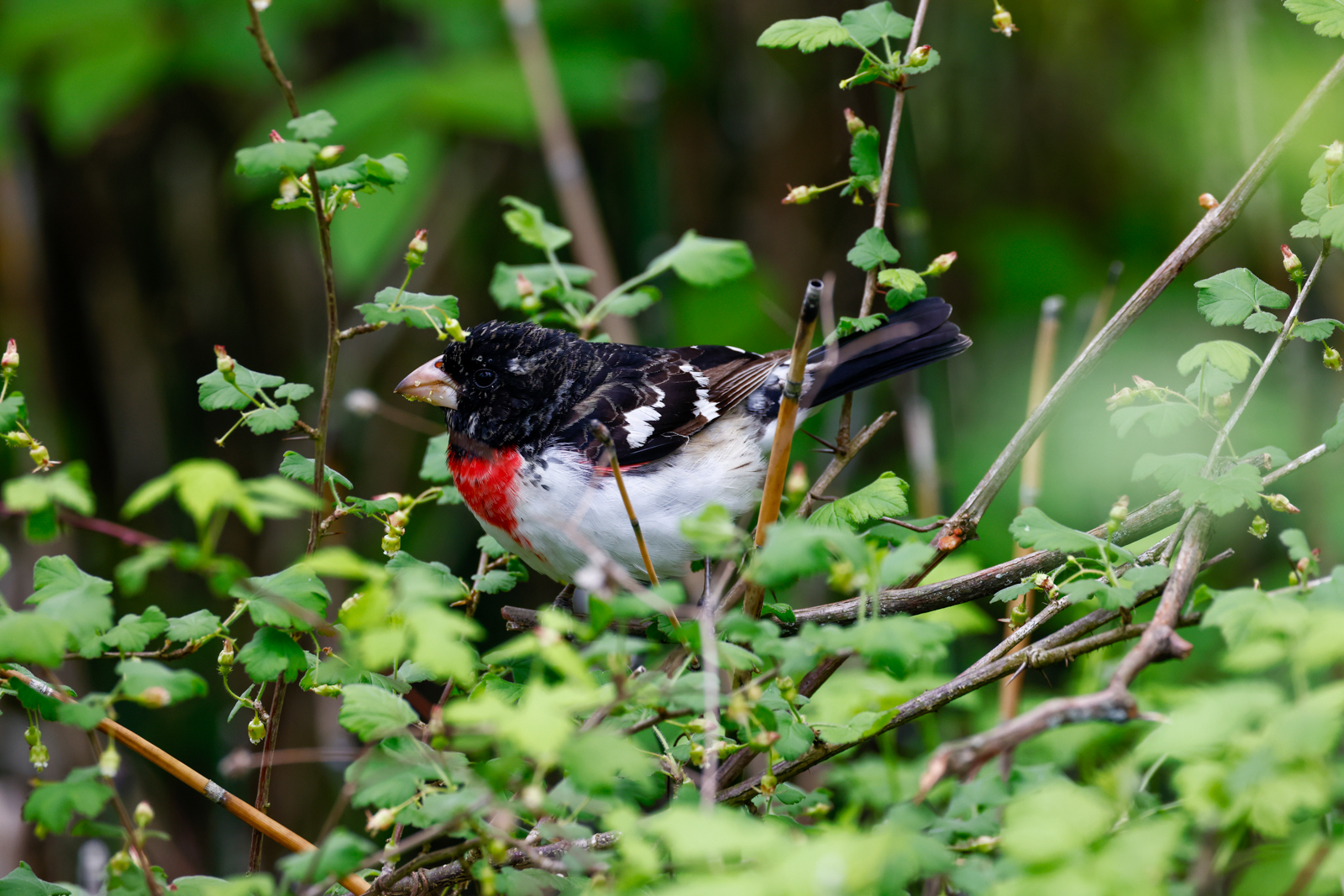
Rose-breasted Grosbeak © Matthew Fuirst
Day 4: Pelee
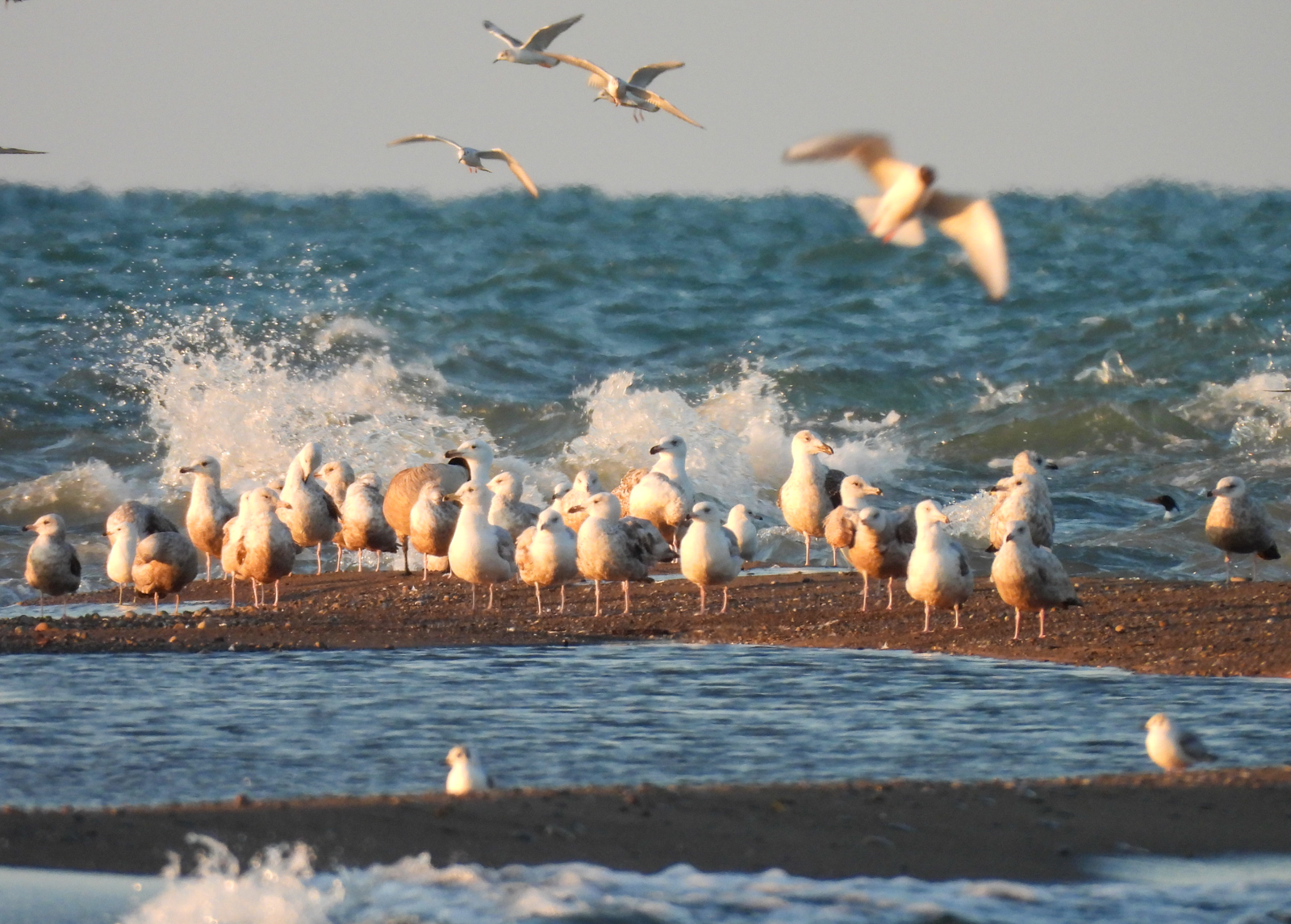
Point Pelee gulls © Delores Steinlicht
Another early start to the day greeted us with a beautiful morning once again, with the winds switching slightly coming from the Northeast but not enough to hamper birding. We made it out to the tip at sunrise where we observed some sporadic reverse migration overhead of various songbirds. Due to the wind direction we did not dally for too long at the tip, and worked our way back to the visitor center, seeing a nice mix of warblers along the way, including nice views of an Eastern Kingbird and Orchard Oriole along the main tip trail.
After a quick granola bar and grabbing the tram, we decided to head into the Woodland Nature Trail to see what new songbirds awaited us, and were not disappointed! We had good views of Warbling Vireo, Blue-gray Gnatcatcher, Northern Parula, and other neotropical migrants. We also managed to see a Great Horned Owl roosting in the willows. After this hike, a quick stop at the Dunes parking lot yielded a highly cooperative Scarlet Tanager that foraged on the forest floor giving us amazing views. Simultaneously, we observed an Eastern Screech Owl in a tree cavity. From there we headed to the DeLaurier Homestead Trailhead for one last hike before munching down on a well-deserved picnic. The highlights of the trail included some cooperative Blue-Gray Gnatcatchers and White-crowned Sparrows and a few Garter Snakes.
Needless to say, after all of our traipsing, lunch was well deserved and the bonus was a cooperative Cape May Warbler that was foraging in the grass right by our picnic tables. During lunch we also observed a Northern House Wren building a nest. After lunch, our last stop in the park was at the Marsh Boardwalk which was a nice change of pace and scenery. We were delighted by the sight of a good number of Northern Map and Painted Turtles quite close to the boardwalk, with a Northern Watersnake that swam by as well. Bird activity was a little quiet due to the time of day, but we still managed to see four Swallow species including Northern Rough-winged and Bank Swallows. As we exited the park, we finally managed to get our first good looks at a Red-headed Woodpecker, which the whole group was excited to see.
This concluded our birding at Pelee, and as bittersweet as it was to say goodbye it was time to hop in the vans and head to our next destination, Erieau, for dinner. We stopped at the Erieau Marsh trail to finish off the birding before dinner. There we saw a mix of songbirds including Northern Waterthrush and Wood Thrush along with some new waterbirds such as American Coot, Semipalmated Plover, Ruddy Duck, Redhead, and Least Sandpiper. We also observed dozens of mating Snapping Turtles in the marsh.
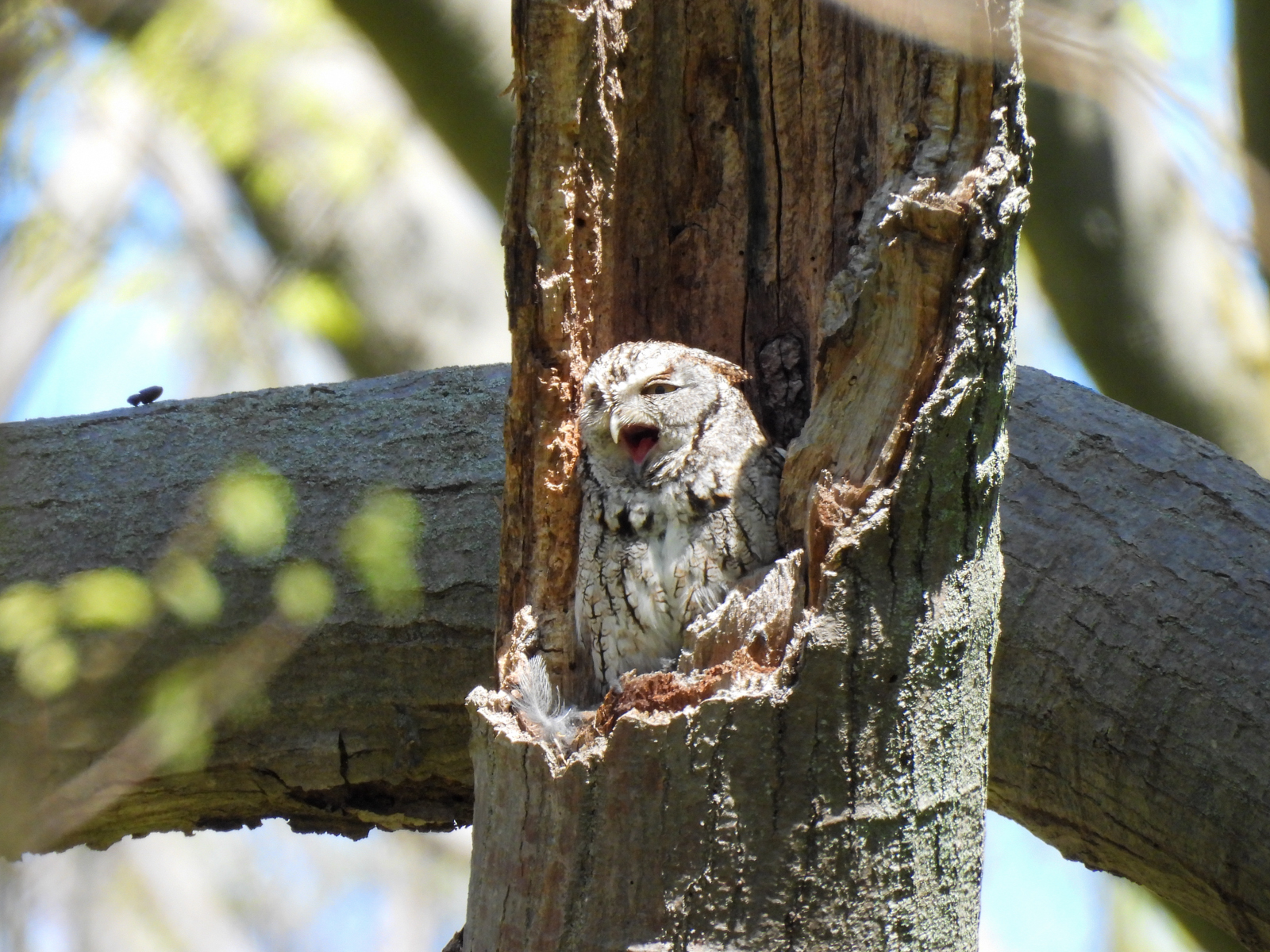
Eastern Screech-Owl © Delores Steinlicht
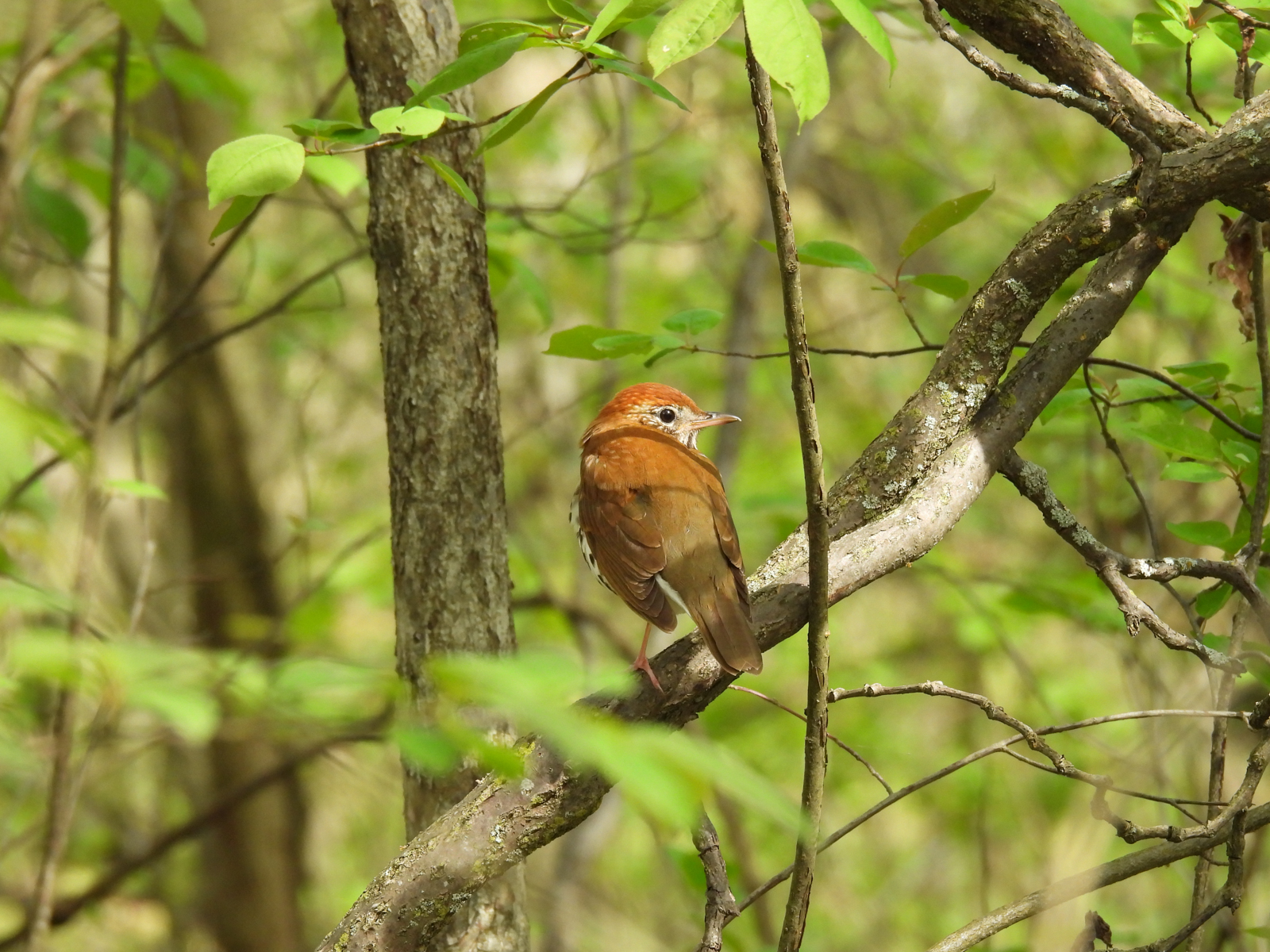
Wood Thrush © Delores Steinlicht
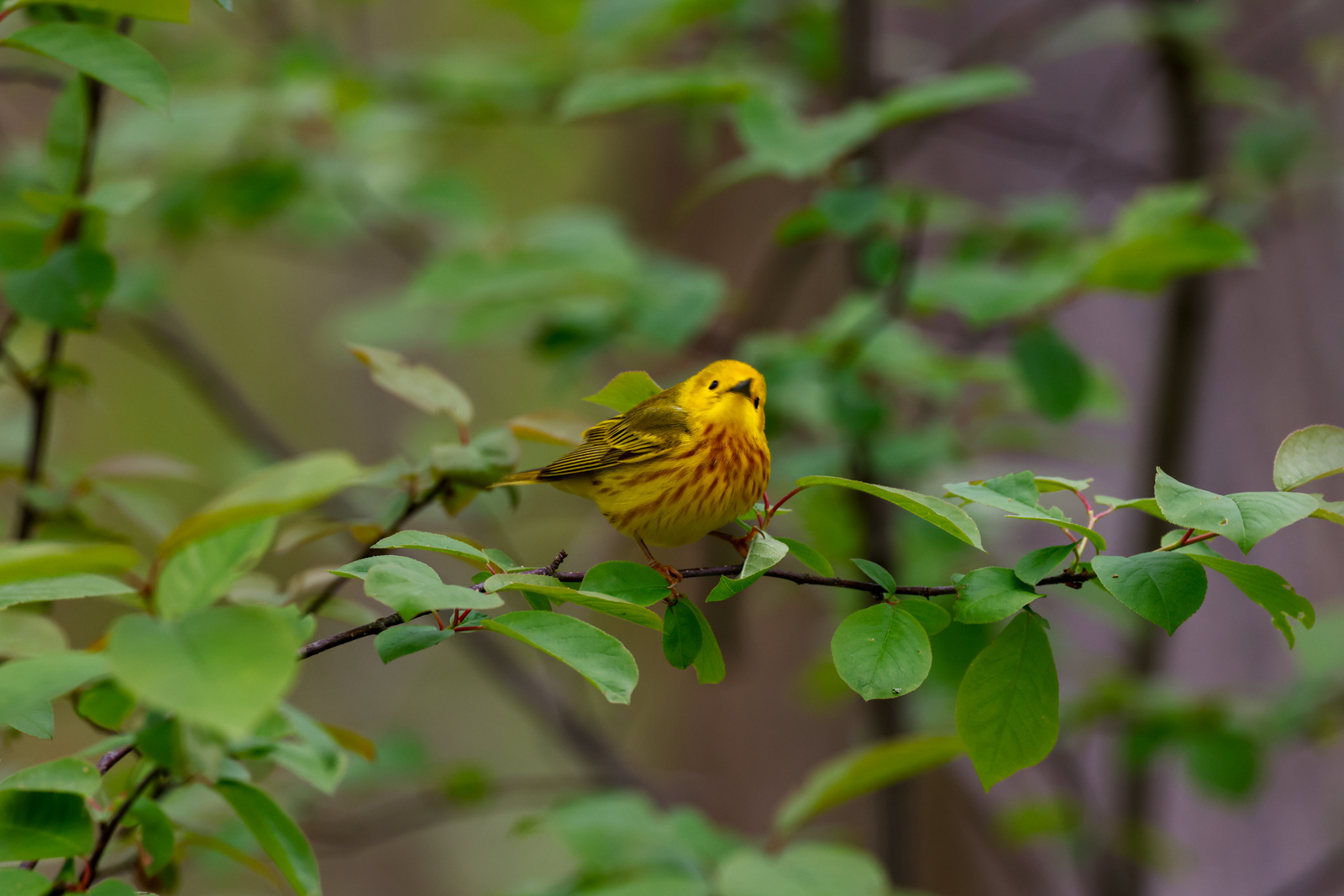
Yellow Warbler © Matthew Fuirst
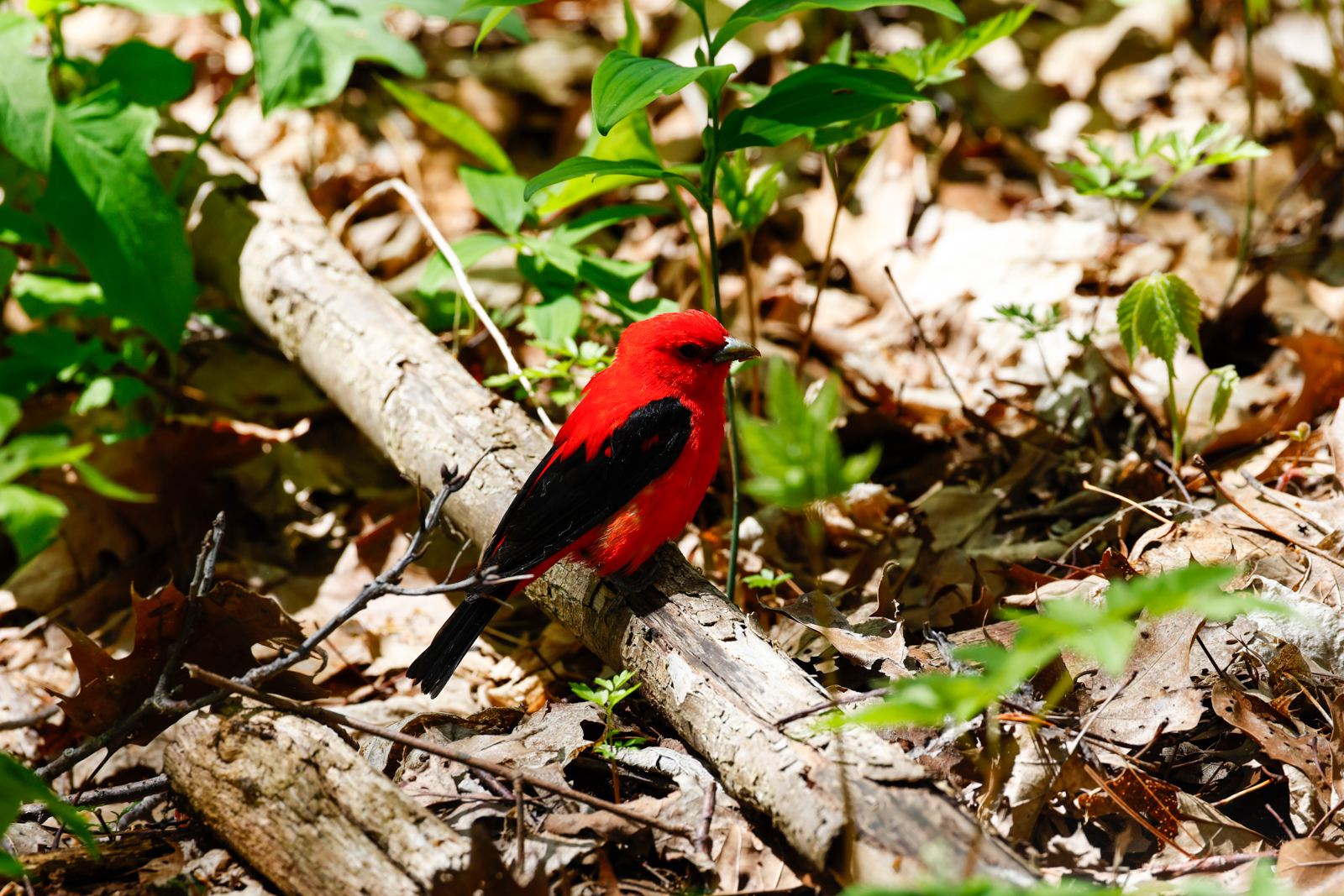
Scarlet Tanager © Matthew Fuirst
Day 5: Rondeau Point PP
Our morning at Rondeau started off with bird song everywhere! It finally felt like a proper spring dawn chorus after numerous mornings that were a bit too cold for insects and migratory songbirds. Before the start of our walk along the Tulip Tree Trail, we heard a Red-headed Woodpecker in the distance and Ovenbirds singing in the forest. We began walking and encountered multiple mixed flocks of warblers including Black-and-white Warbler, Tennessee Warbler, Black-throated Blue Warbler, Black-throated Green Warbler, Northern Parula, Chestnut-sided Warbler, and Palm Warbler, to name a few. Along the boardwalks, we also heard a couple Prothonotary Warblers and at the end of the trail we observed a stunning Yellow-throated Vireo.
From there we headed over to the Pony Barn where along our way, we observed Blue-winged Warbler and Magnolia Warbler along the trail. At the barn, the bird activity had died down a bit because of the heat, but we were amazed to encounter a group of Five-lined Skinks on a pile of leaf litter. On our walk back to the van, we got a great look at a Tufted Titmouse.
Our last stop was at Bennet Ave where we walked the road to find more warblers, Rose-breasted Grosbeaks, Rusty Blackbirds, and beautiful looks at old growth Carolinian forest with a bit of marsh habitat mixed in.
On our way out of town, we visited the Blenheim Sewage Lagoons where we managed to add a bunch of new species for our trip! In the lagoons, we found Short-billed Dowitcher, Semipalmated Sandpiper, Dunlin, and two Wilson’s Phalaropes. We also observed Northern Shoveler, Lesser Scaup, Hooded Merganser, and Ruddy Duck. As we walked around the grounds, we also found Bobolink, Eastern Meadowlark, and Savannah Sparrow.
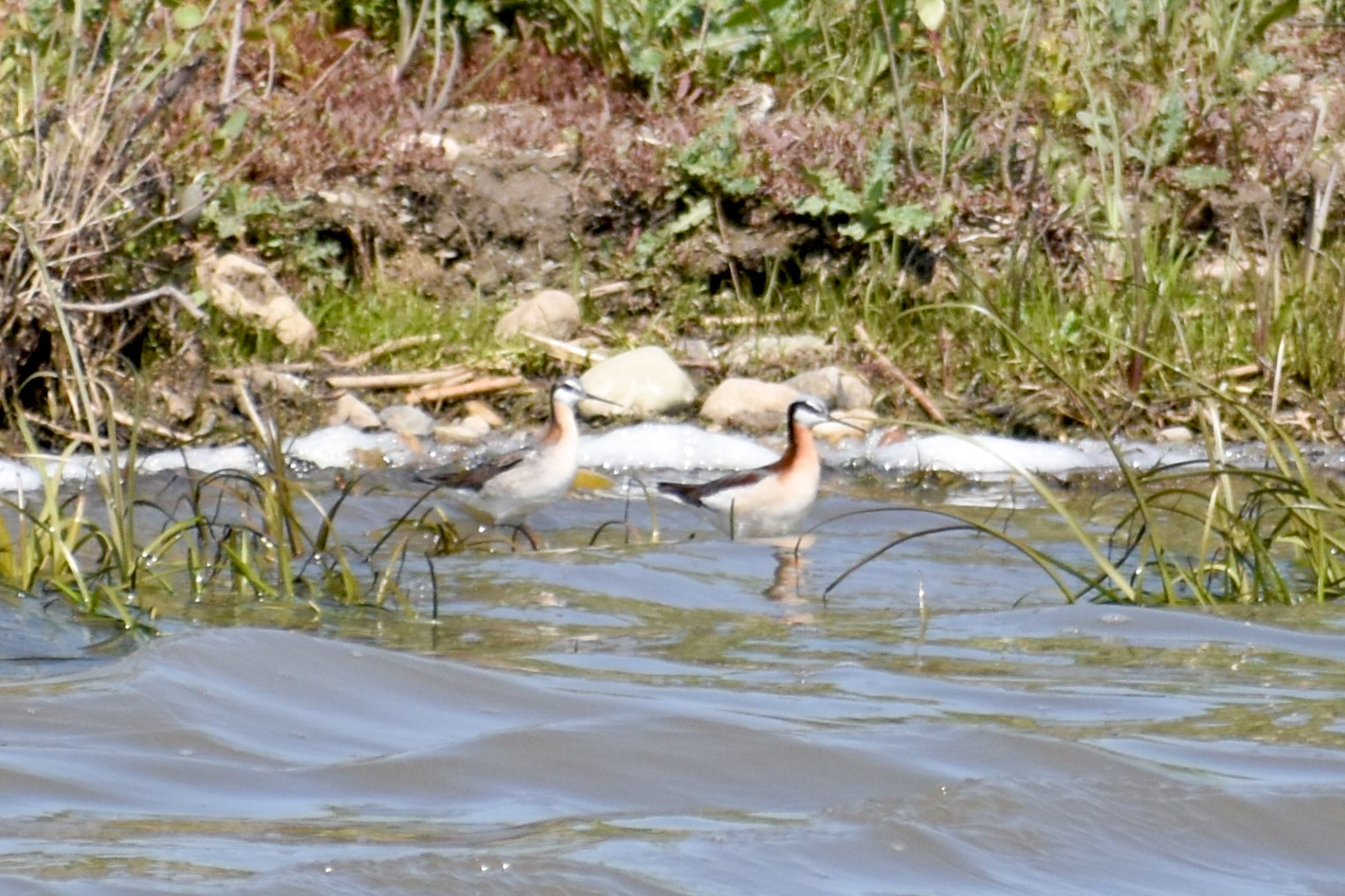
Wilson’s Phalarope © Brendan Boyd
Day 6: Long Point
Our first day at Long Point! We started off the morning by walking around the ‘New’ Long Point Provincial Park. In the park, we observed Blue-headed Vireo, Least Flycatcher, Belted Kingfisher, White-breasted Nuthatch, Field Sparrow, and our first Blackpoll Warbler. We then visited Long Point Bird Observatory, the oldest bird observatory in the Western hemisphere. This remarkable location allowed our tour to view bird banding close-up, a research method used to monitor migratory bird populations. When we arrived at Long Point Bird Observatory’s Old Cut Research Station, the banding crew was in the middle of processing a few birds in the lab. They gave us a nice presentation as they worked, and we got some nice close up views of Blue Jays, Yellow Warblers, Tree Swallow, and Black-throated Blue Warblers. From there we took a walk around the woodlot that is adjacent to the station, and stopped by the viewing platform that looks over the marsh. Our next stop was the Port Rowan Wetlands where we saw Ring-necked Duck, Bank Swallow, Cliff Swallow, Bufflehead, and Common Yellowthroat.
Day 7: Long Point
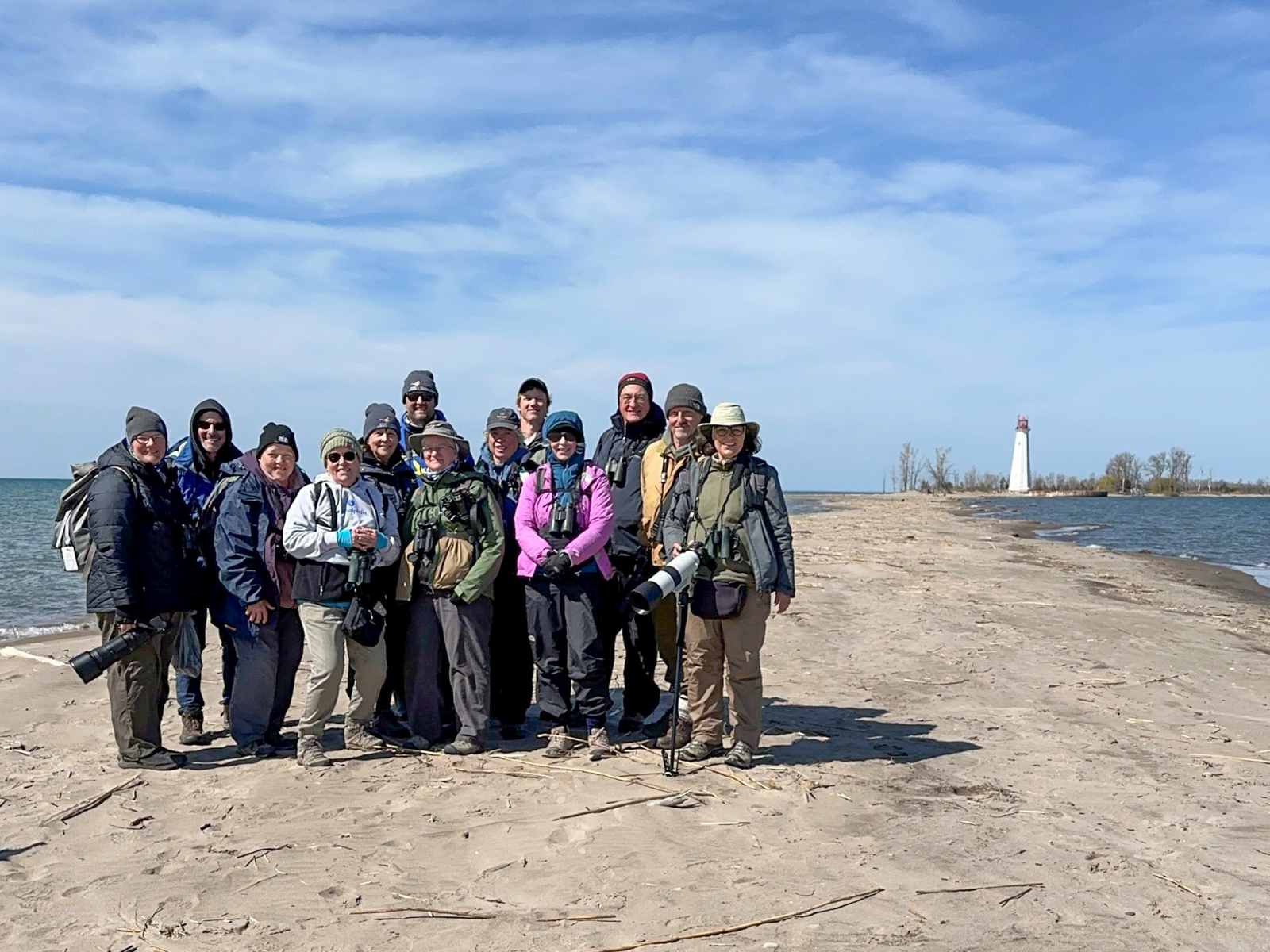
Our group at Long Point © Matthew Fuirst
Our final day at Long Point once again started at the banding lab at Old Cut. After briefly checking out the birds being banded in the lab, we split into two groups and took two boats to the Tip of Long Point…a once in a lifetime opportunity.
The trip out to the Tip typically takes just over an hour depending on the boat, wind and water conditions, and this trip was no exception. One could say we lucked out with the weather for the trip, but the truth is we had been watching the forecast like a hawk for days waiting for the opportune moment to make the trip, as the waters can become quite treacherous given the wrong conditions, and the wind seems to be able to change almost instantly on a whim. The ride out was good, and everyone was in high spirits with the cool breeze in our faces and rafts of ducks on the horizon. On the boat ride out, we flushed a raft of Long-tailed Ducks.
Once we arrived and had our feet back on sandy ground, we stopped to scope out the birds that were perched on the final sand spit of sand that is the Tip. The flock mostly consisted of Bonaparte’s, Herring and Ring-billed Gulls, though a Lesser Black-backed Gull and a Ruddy Turnstone made an appearance as well. From there we hiked down the south shore to the Tip cabin, where the Long Point staff had so graciously carted our cooler for us and where we set up a nice picnic lunch on the porch. While snacking on our well-earned morsels, the bird banding crew showed us their last birds captured of the morning, which included a Baltimore Oriole, Warbling Vireo, and Red-eyed Vireo, to name a few. The real highlight at the Tip was a cooperative and relatively stationary Yellow-breasted Chat, which was hopping around the low-lying cedars near the cabin for most of the morning. This was an exciting find and fortunately everyone got a nice look at the chat! After lunch we hiked our way back along the sand dunes to the Tip to embark on our boat ride back.
After our trip to the Tip, we walked around the perimeter of the Birds Canada Headquarters property to find some birds in the afternoon. We observed large rafts of Ruddy Ducks on the water along with a few scattered Greater Scaup, Lesser Scaup, and Redhead. We also briefly heard a Prairie Warbler during the end of our walk. We then headed to Turkey Point where we enjoyed a beautiful view of the Turkey Point Marsh while we ate dinner on a patio. We finally began to hear the first Red-eyed Vireos singing.
After dinner, some of the group mustered up the energy to go listen for Eastern Whip-poor-wills along the roads in Walsingham. As we waited for dark, we heard Grasshopper Sparrow songs in the grass, Wild Turkey calls, Eastern Bluebird, and American Woodcock displays. Then we began to hear the iconic calls of the Eastern Whip-poor-wills and we received a brief lecture from Birds Canada’s Aerial Insectivore research team about their work in the area.
Day 8: Long Point and return to Toronto
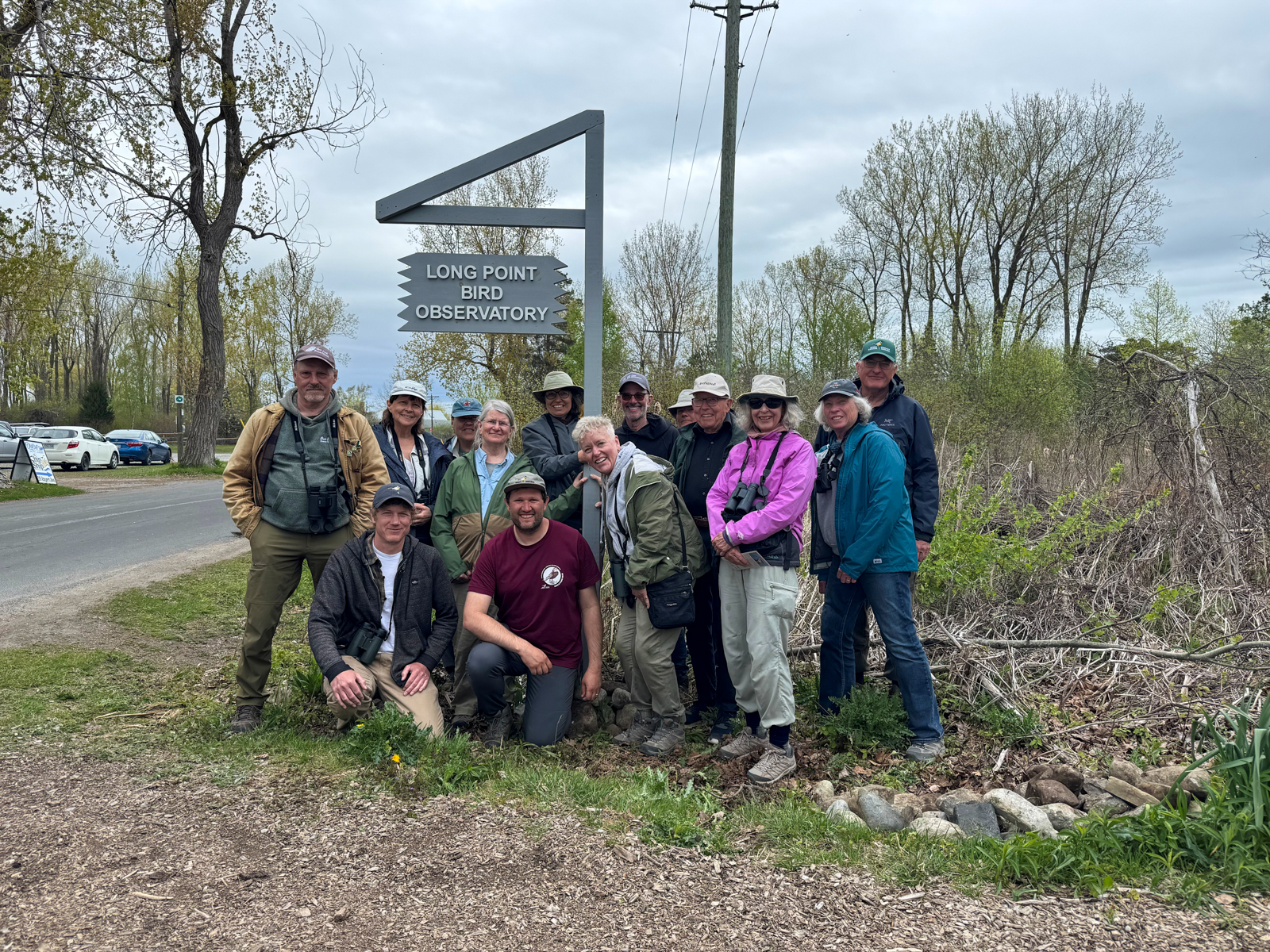
Birding tour group Long Point Bird Observatory © Matthew Fuirst
A birding trip to Long Point would not be complete without a visit to Backus Woods, an old growth hardwood forest within the Carolinian Zone. Immediately after parking the vans, we were welcomed by the song of a Hooded Warbler on its breeding territory.
After a stop at Backus Woods, we continued to the ‘New’ Long Point Provincial Park again where we observed Brown Thrashers, Pied-billed Grebe, Sedge Wren, and found a Spotted Turtle, and endangered species in Ontario. We then revisited the banding lab at Old Cut, where we observed nesting Killdeer and Bald Eagles, and found some more exciting species such as Great-crested Flycatcher, Cedar Waxwing, Red-bellied Woodpecker, and amazing looks at Blackburnian Warblers. We finished our day of birding at Turkey Point beach where we found a Wilson’s Phalarope and observed three Willets sitting on the beach alongside hundreds of Dunlin.
We then made our way to Toronto where we had a farewell dinner, shared our trip highlights, and said our goodbyes.
Day 9: Toronto
On this last day, clients departed from the Toronto airport hotel.




